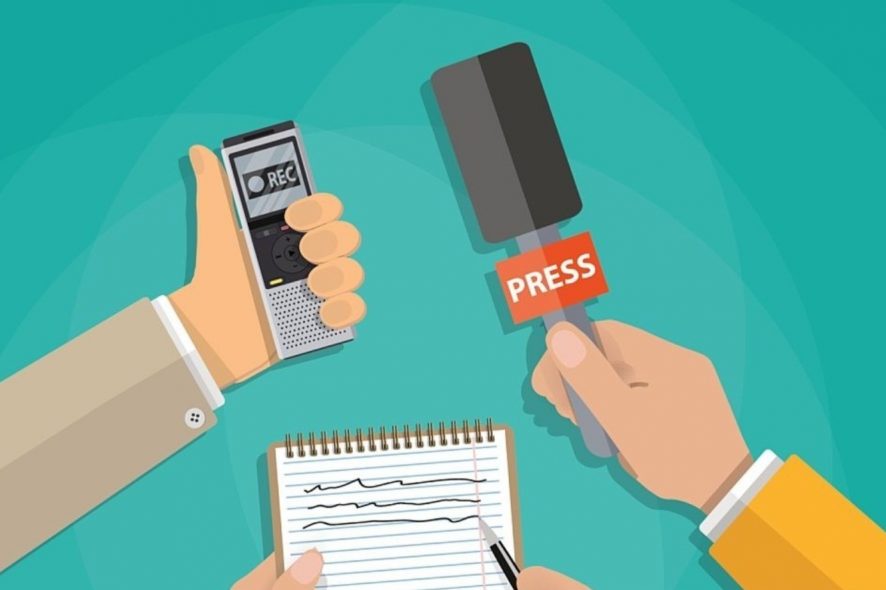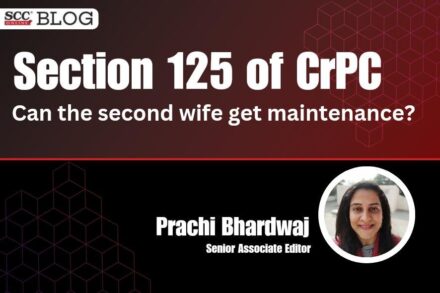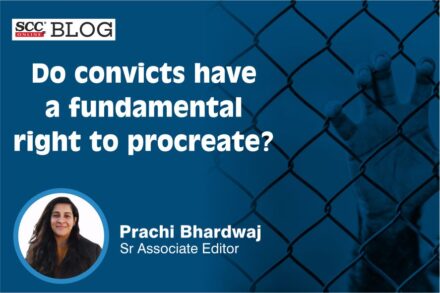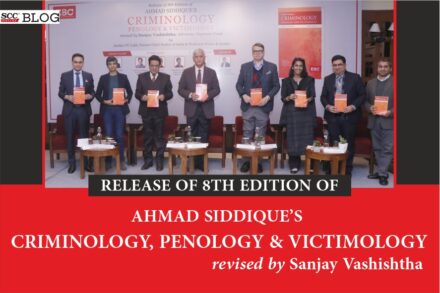A string of high-profile cases, sensationalised by the media, have focused the debate between freedom of speech and expression—as claimed by the media, and the right of fair trial—as proclaimed by the judiciary. It began in 1807, in the United States of America with the case of Aron Burr1; subsequently, it erupted in England; it has finally reached the shores of India. Since the controversy is of a new vintage in India, the Indian judiciary finds itself at a crossroad. Similar to the difficulties faced by the American and the English judiciary, the task before the Indian judiciary is to balance the competing fundamental rights of the media and of the accused. Since we can learn from the American and the English experience, in this article, I propose to first examine the American and the English position on this controversy, then deal with the response in India, both from within and without the judiciary, and lastly to discuss the options before the judiciary and the media.
The judiciary and the media share a common bond and play a complimentary role to each other: man is the centre of their universe. While the media explores, discovers, and reveals the achievements and follies of man, the judiciary deals with the legal problems created by him. Both the judiciary and the media are engaged in the same task: to discover the truth, to uphold the democratic values and to deal with social, political and economic problems. The media, in fact, has been called the handmaiden of justice, the watchdog of society; the judiciary, the dispenser of justice and the catalyst for social reforms. Thus, both are essential for the progress of a civil society.
However, at times, these two pillars of democracy are at loggerheads. Under the fundamental right of freedom of speech and expression, the media claims the right to investigate, to reveal, to expose and to highlight the criminal cases. According to it, in a democracy the people have the right to know. Therefore, the media has a corresponding duty to inform the people about the criminal and the crime. It, thus, demands the right to carry on pre-trial publicity. Yet, on the other hand, the judiciary is keenly aware of the fundamental rights of the accused to a fair trial and of due process of law. Since pre-trial publicity can derail a fair and a speedy trial, the judiciary has to balance the competing fundamental rights. While the freedom of speech and expression of the media, the right to know of the people need to be protected and promoted, the right to fair trial of the accused needs to be secured and guaranteed.
Pre-trial publicity is injurious to the health of a fair trial. Even before the accused is arrested and tried, the cacophony of media proclaims the accused to be guilty. It may project irrelevant and inadmissible evidence as the gospel truth, thereby convincing the people about the guilt of the accused. It, thus, undermines the fundamental principle of common law that “every man is presumed to be innocent till proven guilty”. Once the accused is portrayed as a despicably depraved character, at times, the Bar may refuse to defend him. It, therefore, robs the accused of his fundamental right to defend himself. Such publicity also convinces the witnesses to custom-tailor their testimony to the prosecution case. Most importantly, the appreciation of the evidence by the public and the judiciary may differ. While the people are convinced of the guilt of the accused, the court, after meticulous examination of the evidence may acquit him. Such differences in perception weaken the faith of the public in the criminal justice system. Ultimately, pre-trial publicity undermines the criminal justice system and overturns the rule of law.
However, in a democracy, the right of free press and right of fair trial must peacefully co exist. The United States of America, England and India are the torchbearers of democracy. We are progenies of the common law. We, thus, share a common political ideology, a common legal heritage. Our Constitutions, whether written or unwritten, proclaim, protect and promote the same set of fundamental rights: both the First Amendment of the American Constitution and Article 19(1)(a) of the Indian Constitution guarantee the freedom of speech and expression. The Fifth Amendment of the American Constitution protects “the right to life, liberty and property”; Article 21 of our Constitution, likewise, protects “life and personal liberty”. While the former speaks of “due process of law”, the latter requires “procedure established by law”. Similarly, the Sixth Amendment of the American Constitution ensures “the right to a speedy and public trial, by an impartial jury….” Although we do not have trial by jury, but Article 21 of our Constitution also ensures the same right of fair trial. Though England has an unwritten Constitution, but it, too, subscribes to the identical inalienable rights. Therefore, the three countries share a common denominator of this perpetual confrontation between the freedoms of speech versus fair trial.
The American Supreme Court and the Circuit Courts, which are akin to our High Courts—as they, too, are superior appellate courts—have taken an ambivalent position on this controversy. Caught between the two warring fundamental rights, the American Supreme Court began with protecting the rights of the accused, but slowly shifted to protecting the rights of the media. But in the process, it laid down certain tests for dealing with the effects of pre-trial publicity and prescribed certain remedies for dealing with such adverse effects. These tests and remedies could be useful to us as well.
In Rideau v. Louisiana2, the American Supreme Court laid down the test of “presumed prejudice”. The case involved the robbery of a bank, the kidnapping of three of the bank employees, and murder of one of them. An interview of the accused, Rideau was telecasted for three days, wherein he was shown with the Sheriff in the jail, confessing to his guilt. Rideau’s counsel requested for change in the venue of the trial on the ground that the interview so telecasted had adversely affected his right to a fair trial. The trial court had denied the prayer. The Supreme Court said:
… Under our Constitution’s guarantee of due process, a person accused of committing a crime is vouchsafed basic minimal rights. Among these are the right to counsel, the right to plead not guilty, and the right to be tried in a courtroom presided over by a Judge. Yet in this case the people of Calcasieu Parish saw and heard, not once but three times, a “trial” of Rideau in a jail, presided over by a sheriff, where there was no lawyer to advise Rideau of his right to stand mute.3
In this case, the Court presumed the prejudice caused by the broadcasting of the interview.
In Sheppard v. Maxwell4 the Supreme Court of United States was asked to कंसीडर whether Sheppard was deprived of a fair trial in his state conviction for the second-degree murder of his wife because of the trial judge’s failure to protect Sheppard sufficiently from the massive, pervasive and prejudicial publicity that attended his prosecution.5
Speaking for the Court, Clark, J. concluded that Sheppard did not receive a fair trial consistent with the due process clause of the Fourteenth Amendment and, therefore, reverse the judgment. The Court laid down the test of “reasonable likelihood” of prejudicial news prior to the trial preventing a fair trial. If such reasonable likelihood exists, then the conviction should be overturned. The Court, hence, shifted from the test of “presumed prejudice” to the test of “reasonable likelihood”.
In Murphy v. Florida6 the Supreme Court was seized of the issue, whether the petitioner [Murphy] was denied a fair trial because members of the jury had learned from news accounts about a prior felony conviction or certain facts about the crime with which he was charged.7
Speaking through Marshall, J. the Court observed that Juror exposure to information about a State defendant’s prior convictions or to news accounts of the crime with which he is charged do not alone presumptively deprive defendant of due process; such exposure must be viewed with the totality of the circumstances to determine whether the trial was fundamentally unfair. It, thus, laid down the test of “totality of circumstances” in order to determine whether the pre-trial publicity had adversely affected the fairness of the trial or not.
Moreover, in Moyola v. Alabama8 the Court opined that one seeking to have his conviction nullified on the ground that he was denied a fair trial by an impartial jury due to adverse pre-trial publicity ordinarily must demonstrate an actual, identifiable prejudice attributable to that publicity on the part of members of his jury. Hence, the accused has to prove that the newspaper coverage so saturated and tainted the county populace that any subsequent proceedings in that county would have been unavoidably poisoned by it. One can, thus, see the changing stand of the Supreme Court of United States from “presumed prejudice” to “reasonable likelihood” to “totality of circumstances” and of the Circuit Courts demanding that the accused should “demonstrate an actual, identifiable prejudice attributable to that publicity”.
The American courts have created different yardsticks, as they are sceptical about the adverse impact of pre-trial publicity on a trial. The American courts have gone on to believe that “light impressions carried by the Jury” would yield to the testimony presented at the trial. Hence, pre-trial publicity does not adversely affect a fair trial. Therefore, the press should be given a free hand to cover the crime and the trial.
However, in Bridges v. California9 the American Supreme Court did note that, “[l]egal trials are not like elections, to be won through the use of the meeting-hall, the radio, and the newspaper.”10 Moreover, in Maxwell11, the Court prescribed certain methods for controlling the pre-trial publicity:
(i) Control the presence of the press at the judicial proceedings.
(ii) The court should have insulated the witnesses. This implies protecting and isolating the witnesses during the trial.
(iii) The court should make efforts to control the release of leads, information, and gossip to the press by police officers, witnesses, and the counsel for both sides. More specifically, the trial court might well have proscribed extrajudicial statements by any lawyer, party, witness, or court official which divulged prejudicial matter.
(iv) Reporters who wrote or broadcast prejudicial stories could have been warned as to the impropriety of publishing material not introduced in the proceedings.
(v) Where there is a reasonable likelihood that prejudicial news prior to trial will prevent a fair trial, the judge should continue the case until the threat abates, or transfer it to another county not so permeated with publicity.
(vi) If publicity during the proceedings threatens the fairness of the trial, a new trial should be ordered.
But the Court warned, “But we must remember that reversals are but palliatives; the cure lies in those remedial measures that will prevent the prejudice at its inception.”12 But despite the existence of these methods to control pre-trial publicity, the American courts, by and large, have been reluctant to utilise this methodology. As far as the American courts are concerned the freedom of speech and expression takes precedence over the right of fair trial.
While the American courts have favoured the press over the accused, the British courts have thought vice versa. Laws, J. in R. v. Lord Chancellor, ex p Witham13 observed, “Indeed, the right to a fair trial … is as near to an absolute right as any which I can envisage.”14 The English courts recognise the potential threat to justice posed by unrestrained publicity. Certain information, especially reports of confessions made by criminal defendants and details of defendants’ prior convictions, is considered inherently prejudicial. Courts tend to halt prosecutions when detrimental publicity interferes with criminal trials. If the rules of evidence preclude the production of particular facts during trial, and members of the jury are exposed to those same facts, British courts simply assume that justice has been compromised. (Ref. to R. v. Evening Standard Co. Ltd.15)
Thus, the English courts have followed the test of “presumed prejudice” to hold that pre-trial publicity has violated the right to fair trial. In Attorney-General v. Guardian Newspapers Ltd.16 Collins, J. observed that in assessing whether there has been a violation, courts must determine whether the risk of prejudice from the publication is both immediate and serious. The courts must consider “the nature of the published material and its presentation, the timing of the publication, the likelihood of its coming to the attention of jurors or potential jurors, the likely impact on the jury and the ability of the jury to abide by any judicial directions which seek to neutralise any prejudice.”17
In order to ensure fair trial, the English have restricted the flow of information. Under the Contempt of Court Act, 1981, the English courts have the power to prevent or punish conduct which tends to obstruct, prejudice or abuse the administration of justice.
While the American and the English courts have grappled with this problem, the Indian courts have gingerly touched the issue. The reason is not far to seek: trial by media is a recent phenomenon. Hence, we find sporadic obiter, but no concrete ratio decidendi. In Reliance Petrochemicals Ltd. v. Proprietors of Indian Express Newspapers, Bombay (P) Ltd.18, the Hon’ble Supreme Court partly dealt with the issue of freedom of press and administration of justice. Dealing with an adverse article published in the Indian Express with regard to the public issues of Reliance Petrochemicals, the Supreme Court had restrained “all the six respondents … from publishing any article, comment, report or editorial in any of the issues of the Indian Express or their related publications questioning the legality or validity of any of the consents, approvals or permissions to the [said issue of debentures].”19 The issue raised was about the continuation of such injunction especially when the shares had been oversubscribed though the day of allotment had not yet expired and before the allotment the subscribers could withdraw their subscriptions. The Apex Court held:
There must be reasonable ground to believe that the danger apprehended in continuance of the injunction is real and imminent. This test is acceptable on the basis of balance of convenience.20
However, the Supreme Court has not yet found or laid down any formula or test to determine how the balance of convenience in a situation of this type, or how the real and imminent danger should be judged in case of prevention by injunction of publication of an article in a pending matter. But the Court did caution that public interest demands that there should be no interference with judicial process and the effect of the judicial decision should not be pre-empted or circumvented by public agitation or publications.
In State of Maharashtra v. Rajendra Jawanmal Gandhi21, while dealing with a case of alleged attempt to rape a minor, the Apex Court observed:
37. … A trial by press, electronic media or pubic agitation is the very antithesis of the rule of law. It can well lead to miscarriage of justice. A Judge has to guard himself against any such pressure and he is to be guided strictly by the rules of law.22
In M.P. Lohia v. State of W.B.23, the Hon’ble Supreme Court dealt with a case where a trial for dowry death was sub judice, when an article appeared in a magazine Saga, entitled “Doomed by Dowry”. The article was based on the interview of the family of the deceased, giving version of the tragedy and extensively quoting the father of the deceased as to his version of the case. The Apex Court observed:
10. … we have no hesitation that these type of articles appearing in the media would certainly interfere with the administration of justice. We deprecate this practice and caution the publisher, editor and the journalist who were responsible for the said article against indulging in such trial by media when the issue is sub judice.24
However, the Court treated the matter as closed instead of pursuing this matter any further.
Recently, in Manu Sharma v. State (NCT of Delhi)25, the Apex Court has extensively observed about the danger of trial by media. It opined as under:
297. There is danger of serious risk of prejudice if the media exercises an unrestricted and unregulated freedom such that it publishes photographs of the suspects or the accused before the identification parades are constituted or if the media publishes statements which outrightly hold the suspect or the accused guilty even before such an order has been passed by the court.
298. Despite the significance of the print and electronic media in the present day, it is not only desirable but the least that is expected of the persons at the helm of affairs in the field, to ensure that trial by media does not hamper fair investigation by the investigating agency and more importantly does not prejudice the right of defence of the accused in any manner whatsoever. It will amount to travesty of justice if either of this causes impediments in the accepted judicious and fair investigation and trial.
It further held:
301. Presumption of innocence of an accused is a legal presumption and should not be destroyed at the very threshold through the process of media trial and that too when the investigation is pending. In that event, it [would] be opposed to the very basic rule of law and would impinge upon the protection granted to an accused under Article 21 of the Constitution. [Anukul Chandra Pradhan v. Union of India26.] It is essential for the maintenance of dignity of the courts and is one of the cardinal principles of the rule of law in a free democratic country, that the criticism or even the reporting particularly, in sub judice matters must be subjected to check and balances so as not to interfere with the administration of justice.27
The Indian judiciary has not dealt substantially with the issue of freedom of press versus the right to fair trial. But this issue has taxed the imagination of the media, both the world over and in India. In 1994, thirty-nine distinguished legal experts and media representatives met for three days in Madrid. One of the basic principles, enunciated in the Madrid Principles on the Relationship Between the Media and Judicial Independence, is that:
It is the function and right of the media to gather and convey information to the public and to comment on the administration of justice, including cases before, during and after trial, without violating the presumption of innocence.28
Thus, even the Madrid Principles do place a limit on the media “not to violate the presumption of innocence”.
Similarly, in India, the Press Council of India has prescribed “The Norms of Journalistic Conduct.”29 Norm 1 states:
1. Accuracy and fairness.—(i) The press shall eschew publication of inaccurate, baseless, graceless, misleading or distorted material. All sides of the core issue or subject should be reported. Unjustified rumours and surmises should not be set forth as facts.30
While dealing with investigative journalism, Norm 26(f) states:
26. (f) The reporter must not approach the matter or the issue under investigation, in a manner as though he were the prosecutor or counsel for the prosecution. The reporter’s approach should be fair, accurate and balanced. All facts properly checked up, both for and against the core issues, should be distinctly and separately stated, free from any one-sided inferences or unfair comments. The tone and tenor of the report and its language should be sober, decent and dignified, and not needlessly offensive, barbed, derisive or castigatory, particularly while commenting on the version of the person whose alleged activity or misconduct is being investigated. Nor should the investigative reporter conduct the proceedings and pronounce his verdict of guilt or innocence against the person whose alleged criminal acts and conduct were investigated, in a manner as if he were a court trying the accused.31
 Norm 26(g) unequivocally states:
Norm 26(g) unequivocally states:
26. (g) In all proceedings including the investigation, presentation and publication of the report, the investigative journalist/newspaper should be guided by the paramount principle of criminal jurisprudence, that a person is innocent unless the offence alleged against him is proved beyond doubt by independent, reliable evidence.32
 The Press Council has further prescribed the cautions to be observed while criticising judicial acts. Norm 12(a) states as under:
The Press Council has further prescribed the cautions to be observed while criticising judicial acts. Norm 12(a) states as under:
12. (a) Caution in criticising judicial acts.—(i) Except where the court sits “in-camera” or directs otherwise, it is open to a newspaper to report pending judicial proceedings, in a fair, accurate and reasonable manner. But it shall not publish anything—
which, in its direct and immediate effect, creates a substantial risk of obstructing, impeding or prejudicing seriously the due administration of justice; or
is in the nature of a running commentary or debate, or records the paper’s own findings, conjectures, reflection or comments on issues, sub judice and which may amount to abrogation to the newspaper the functions of the court; or
regarding the personal character of the accused standing trial on a charge of committing a crime.
(ii) Newspaper shall not as a matter of caution, publish or comment on evidence collected as a result of investigative journalism, when, after the accused is arrested and charged, the court becomes seized of the case. Nor should they reveal, comment upon or evaluate a confession allegedly made by the accused.33
In case these norms are followed in letter and spirit, the controversy between freedom of the press and the right of accused of fair trial would itself subside. However, these norms have been followed more in breach than in adherence. The consequences of the media overstepping these norms are not too far to imagine. Already the 17th Law Commission has suo motu taken up the topic of “Trial by Media: Free Speech and Fair Trial under Criminal Procedure Code, 1973.”34 In its 200th Report, the Law Commission has opined that today there is a feeling that in view of the extensive use of the television and cable services, the whole pattern of publication of news has changed and several such publications are likely to have a prejudicial impact on the suspects, accused, witnesses and even Judges and in general on the administration of justice. It said that publications which interfered or tend to interfere with the administration of justice would amount to criminal contempt under the Contempt of Courts Act, 1971. It further suggested that if in order to preclude such interference, the provisions of the Contempt of Courts Act were to impose reasonable restrictions on freedom of speech, such restrictions would be valid. Since Section 3(2) of the Contempt of Court Act claims that a criminal proceeding is said to be pending, where it relates to the commission of an offence, when the charge-sheet or challan is filed, the Law Commission has suggested this part of the section be amended to lay down that the criminal proceeding is said to begin from the moment of arrest of the offender. It has further suggested that publications with reference to character of the accused, previous convictions, confessions, judging the guilt or the innocence of the accused or discrediting witnesses could also be considered as criminal contempt. It further suggested that the power to restrain the press from publishing or broadcasting or telecasting adverse reports about a criminal case should be given to the High Courts. Although the said Report has not been accepted by Parliament, but the recommendation of the Report are possible pointers to the future scenario involving the freedom of the press.
In a nascent democracy like ours, the judiciary and the press have a pivotal and a crucial role to play. Both have to uphold the constitutional philosophy and the rule of law. The judiciary and the press have to supplement and not supplant each other. While the people have a right to be informed, the individual has the right to be protected and defended in a criminal case. Although it is said that the right of an individual should give way to the right of the community, but in criminal justice system, it is the right of the accused, which is paramount. His presumption of innocence cannot be sacrificed at the altar of freedom of speech and expression. To do so, would be to turn the entire criminal justice system on its head; it would violate Article 21 of Constitution of India, which is the heart and soul of our Constitution. If the rule of law is to be protected and promoted, administration of justice has to be given preference over the freedom of speech and expression as enjoyed by the press.
* Judge, Rajasthan High Court.
** This Article was first published in The Practical Lawyer (2011) PL October S-38. It has been reproduced with the kind permission of Eastern Book Company.
1 United States v. Burr, 25 F Cas 55 (D Va 1807).
2 10 L Ed 2d 663 : 373 US 723 (1962).
3 10 L Ed 2d 663, 665-66.
4 16 L Ed 2d 600 : 384 US 333 (1965).
5 16 L Ed 2d 600, 604.
6 44 L Ed 2d 589 : 421 US 794 (1974).
7 44 L Ed 2d 589, 592.
8 623 F 2d 992 (5th Cir 1980).
9 86 L Ed 192 : 314 US 252 (1941).
10 314 US 252, 271.
11 16 L Ed 2d 600 : 384 US 333 (1965).
12 16 L Ed 2d 600, 620.
13 1998 QB 575 : (1998) 2 WLR 849 : (1997) 2 All ER 779 (DC).
14 1998 QB 575, 585.
15 (1954) 1 QB 578 : (1954) 2 WLR 861 : (1954) 1 All ER 1026 (DC).
16 1999 EMLR 904.
17 1999 EMLR 904, 914.
18 (1988) 4 SCC 592.
19 (1988) 4 SCC 592, 600, para 7.
20 (1988) 4 SCC 592, 593.
21 (1997) 8 SCC 386 : 1998 SCC (Cri) 76.
22 (1997) 8 SCC 386, 403, para 37.
23 (2005) 2 SCC 686 : 2005 SCC (Cri) 556.
24 (2005) 2 SCC 686, 688-89, para 10.
25 (2010) 6 SCC 1, 110-11, paras 297-98 : (2010) 2 SCC (Cri) 1385.
26 (1996) 6 SCC 354 : 1996 SCC (Cri) 1338.
27 (2010) 6 SCC 1, 111, para 301.
28 Universal’s Compendium. Reports of the Law Commission of India, Vol. 17 (Universal Law Publishing Co., New Delhi 2010) 200.11.
29 Norms of Journalistic Conduct (2010 Edn., Press Council of India).
30 Norms of Journalistic Conduct, 7.
31 Norms of Journalistic Conduct, 26.
32 Norms of Journalistic Conduct, 26.
33 Norms of Journalistic Conduct, 15-16.
34 Universal’s Compendium. Reports of the Law Commission of India, Vol. 17 (Universal Law Publishing Co., New Delhi 2010) 200.11.







